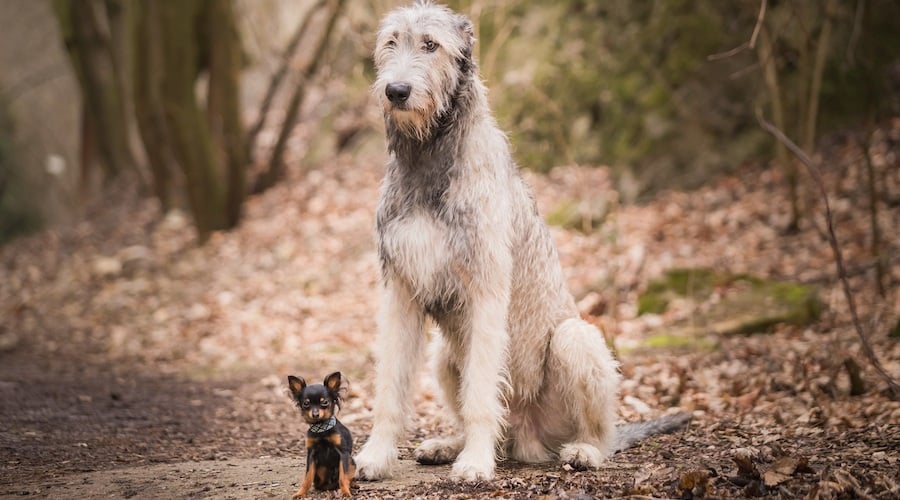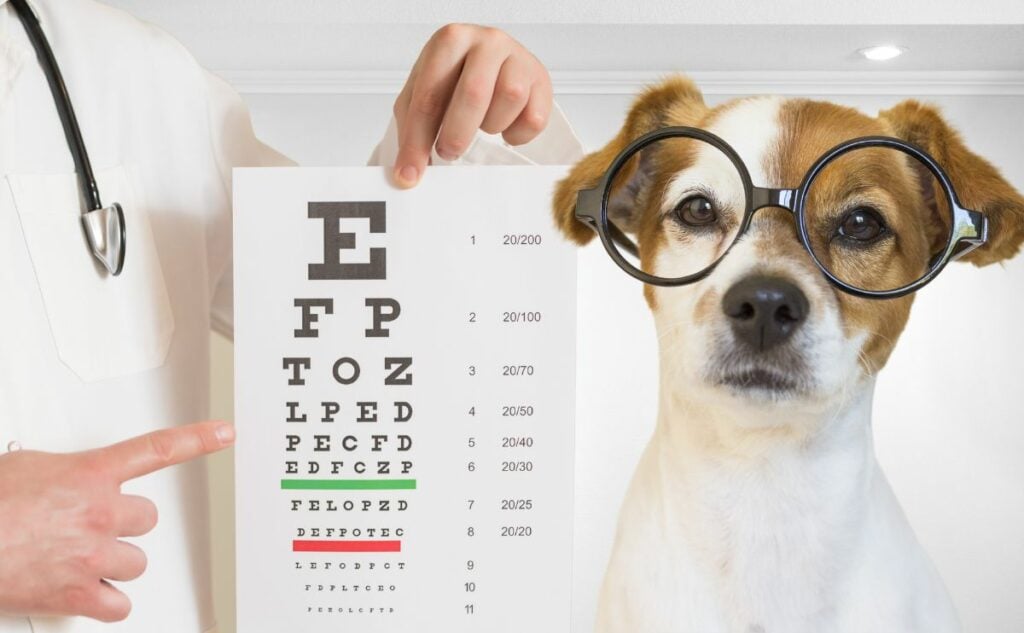Fur Real, These 55 Dog Facts Are So Nuts We Had To Fact-Check Twice
When you purchase through links on our site, we may earn a commission. Here’s how it works.
You think you know dogs? Oh, friend, sit. Stay. Scroll. I have 55 dog facts that are so outrageous and tail-waggingly bizarre that I had to fact-check them twice to ensure we weren’t being pranked by a Golden Retriever with WiFi.
This isn’t your average “Dogs like belly rubs” article. I’m talking about science, ancient history, emotional sabotage (looking at you, puppy eyes), and even a few facts the government probably doesn’t want you to know. So grab a treat, call your dog over, and prepare to be amazed, amused, and maybe a little concerned about this information about dogs. These random facts about dogs are nuts but in the best possible way.
So, let’s unleash the madness.

Top 11 Fun Dog Facts
Let’s kick things off with some bark-worthy brilliance. These aren’t your average “dogs wag their tails” facts. These are the kind of tidbits and other unusual facts about dogs that’ll have you staring at your pup, wondering if they’re hiding a PhD under all that fluff.
- Dogs Can Smell Time. That’s right, your dog might not know what day it is, but they can detect the passage of time by sensing how scents change and fade. That’s why they’re waiting by the door 5 minutes before you even think about coming home. Spooky? Yup. Science? Also yup.
- A Greyhound Could Beat a Cheetah in a Marathon. Cheetahs are fast sprinters, but a Greyhound can maintain a speed of 35 mph for 7+ miles. In a long-distance race? That spotted cat’s toast.
- Your Dog’s Nose Print Is Like a Fingerprint. Each dog’s nose has a unique pattern of ridges and creases, like a little boop-worthy snowflake. In some countries, nose prints are even used for identification.
- Dogs Have the Intelligence of a 2-Year-Old Human. This explains why they understand about 165 words and also why they get so dramatic when you spell out “B-A-T-H.”
- The Basenji Doesn’t Bark It Yodels. Yes, this ancient African breed doesn’t bark. It lets out a haunting yet hilarious “baroo” sound that makes it sound like your dog just joined an alpine choir.
- Dogs Dream And Probably About You. If your dog’s legs twitch while they sleep, they’re likely dreaming. Brain scans show dogs go through similar REM cycles as humans. And yes, scientists believe they dream of things from their day. Like you. Aww.
- Dalmatian Puppies Are Born Completely White. Those iconic spots? They show up over time, like nature’s version of a slow-reveal Instagram filter.
- Dogs Can Detect Diseases Like Cancer. Some dogs can sniff out cancer, diabetes, and even COVID-19. Their sense of smell is so powerful that they can detect parts per trillion. Think of a drop of blood in an Olympic-sized pool.
- The World’s Oldest Dog Lived to Be 29. Meet Bluey, an Australian cattle dog who lived to be 29 years and 5 months old. That’s like 200 in “dog years.”
- Dogs Have Sweat Glands, But Only in Their Paws. That’s why they pant like they’re auditioning for a horror movie in July. Their central cooling system is through their tongues and those tiny paw pads.
- Dogs Can Tell If You’re Lying. Studies show dogs read human facial expressions and tone of voice and can detect when you’re not being truthful. So yes, they know you didn’t “accidentally” drop that steak.

Top 11 Interesting Dog Facts
Dogs have been by our side for thousands of years, but their history is far wilder than most people realize. From eyebrow-shaving Egyptians to ancient medical myths, heroic rescue dogs, and the tiniest pup on record, these 11 fascinating facts reveal just how weird, extraordinary, and world-changing dogs really are.
- Dogs Are Super Old. The history of dogs dates back approximately 40 million years when the animal was known as Miacis. This was a weasel-type animal that lived among trees and in dens. This animal evolved into something called a Tomarctus, which is in the same classification as the wolf and jackal.
- Egyptians Worshipped Them. Ancient Egyptians revered dogs. The process of mourning, when a pet owner’s dog died included shaving their eyebrows and covering themselves in mud while they mourned out loud for days or weeks.
- Tragic Origins. If you have ever heard the phrase “raining cats and dogs,” it originates from seventeenth-century England, when it would rain so hard that the streets would become flooded. During this time, homeless animals would, unfortunately, drown and float down the streets, giving the appearance of it actually raining cats and dogs.
- Forgotten Companions. There are many stories about the origins of werewolves, but most date back to the fall of the Roman Empire. During this time, basic survival became more important than breeding dogs, so many owners abandoned their dogs. After that, the dogs began to form packs and roam the streets of villages, scaring people.
- Strange Dog Laws. Some weird laws exist in small towns and cities across the country. In Paulding, Ohio, it is legal for police officers to use force, including biting a dog, if the dog does not stop barking at them. In Ventura County, California, pets need a permit to have sex.
- Flat-Faced Struggles. You can tell a lot about a dog by looking at its face. Dogs with pointy faces, resembling wolves, tend to live longer than those with flat faces. Dogs like Bulldogs or Pugs often face more health problems due to their facial structure. But these breeds were not bred for activity and work; they are descendants of royal lapdogs.
- Practical Puffs. French Poodles are not actually French; they are German. Poodle means pudelhand in German, which stands for “splashing dog.” Many dog experts believe that poodles’ hair evolved into the puffs we see today when people used to shave dogs to make them capable of swimming faster. At this time, they left hair around the joints to keep them warm.
- China’s Canine Legacy. Much of the original dog domestication occurred in China, where dog breeders were highly admired. This is where the dwarfing and miniaturization of dogs took place.
- Misguided Medicine. The origin of amputating a dog’s tail goes back to Lucius Columella’s assumption that cutting off the tail prevented rabies. This was common practice in ancient Rome.
- Heroic Canines. On September 11, 2001, specially trained dogs were on the scene of the World Trade Center tragedy. These included German Shepherds, Labs, and Dachshunds.
- Mini Marvel. The smallest dog ever recorded is a Yorkshire Terrier that was 2.5 inches tall and 3.5 inches from nose to tail. This dog weighed only four ounces.

The Incredible Senses Of Dogs: Smell, Hearing & Vision Dog Facts
Dogs don’t just see the world differently, they sense it on a whole other level. From sniffing out buried gas lines to spotting you from a mile away, dogs are walking, tail-wagging sensory supercomputers. This section explores just how powerful their senses really are. And trust me, your nose doesn’t stand a chance.
- Not Color Blind. Contrary to popular belief, dogs are not color blind and can see in color. The colors they see are not as vivid, though, and they can see better in low light.
- Super Sniffers. Dogs have a sense of smell that is 1,000 to 10,000 times better than that of humans. Dogs have approximately 220 million smell-detecting cells, compared to humans, who have only about 5 million.
- Scent Detectives. Dogs can smell the scent of dead bodies underwater and natural gas buried less than 40 feet beneath the surface. Dogs also can detect lung cancer by smelling a person’s breath.
- Pee Mail. Dogs leave behind a message in their urine. Other dogs that sniff the urine can tell if that dog is male or female, old or young, happy or angry, and sick or healthy.
- Status Sprays. Male dogs raise their leg to urinate on vertical objects because they want the receiver of the message to know they are tall and dominant.
- Distant Recognition. A person standing still 300 yards away from a dog is nearly invisible, but your dog can identify you from one mile away if you wave your arms.
- Tactile Pups. Dogs develop their sense of touch as their primary sense, and their entire body is covered in nerve endings. They also have sweat glands on their paws, which is the only area where they are located.
More Random & Unusual Facts About Dogs
- Forbidden Mating. In the Middle Ages, purebred dogs were highly expensive and desirable, So mixed breeds wore blocks around their neck to prevent them from breeding with dogs of nobility.
- Healing Hounds. At the end of World War I, the Germans trained the first guide dogs to assist soldiers who had become blind during the war.
- Health Signals. Dogs pace, pant, and will act restless when they have potential health issues.
- Calming Pets. Science shows that petting dogs lower the blood pressure of dog owners.
- Ancient Origins. Greyhounds are the most ancient dog of any breed. The term “Greyhound” comes from the German word meaning “old dog.”
- Canine IQ. The most intelligent dog breeds are Collies and Poodles. The least intelligent and Afghan Hounds and Basenji.
- Bold Symbolism. During the Renaissance era, portraits of dogs were often depicted as a symbol of fidelity and loyalty. You can also see them in a lot of religious art throughout Europe by Leonardo da Vinci.
- Rockstar Rescue. Ozzy Osborne once saved his wife’s Pomeranian by wrestling a coyote until it released the dog and ran away.
- Ancient Remedies. When someone was bitten by a rabid dog in ancient Egypt, they were encouraged to eat the roasted liver of the dog to avoid contracting the disease. There were a lot of weird customs when it came to dog body parts. The tooth of a dog with rabies was put on a band tied to the person’s arm to prevent infection. Dog menstrual blood was used for hair removal.
- Dog Nation. The United States has the largest population of dogs, followed by France.
- Puppy Boom. If never fixed, a female dog, her mate, and their puppies could have over 66,000 offspring in six years.
- Soft Spot. Chihuahuas share a common trait with human babies. Both are born with soft spots on their skulls that close as they age.
- Presidential Pup. Franklin Roosevelt paid $150,000 for a destroyer to locate his lost dog, Scottie, in the Aleutian Islands.
- Weaponized Loyalty. During World War II, the Russians trained dogs to perform suicide missions with mines strapped to their backs.
- Fast Maturity. A one-year-old dog is as physically mature as a 15-year-old human being.
- Couch Companions. 87% of dog owners love their dogs curling up next to them by their feet while they watch TV.
- Deadlier Than Sharks. In 2002 alone, more people in the United States were killed by dogs than by sharks in the previous 100 years.
- Fastest Fido. Greyhounds are the fastest dogs on the planet. At their peak, they can reach speeds of 45 miles per hour.
- Top Dog Shift. The Labrador Retriever was the most popular dog breed in the US, Canada, and the UK for over three decades. However, the French Bulldog has recently claimed the top spot in the United States.
- Will-Fetchers. There are approximately one million dogs in the United States who are the primary beneficiary of their owners’ wills.
- Voicemail Vibes. 33% of dog owners admit to leaving their dogs messages on their answering machine when they are not home.
- Paw-liday Traditions. 79% of people include their dog’s name on holiday and greeting cards, while 58% put their pets in family photos with them.
- Shared Anatomy. Dogs are the only other animal besides humans to have a prostate.

From Teeth To Tail: Fascinating Facts About Dog Bodies
- Dogs Digestion – Rarely does a dog chew his food. As they eat, they gulp and swallow their food, and digestive enzymes do the job of breaking food up in the stomach. Most of the digestion takes place in the intestines with help from the pancreas and liver.
- Skeletal System – Dogs have 319 bones. Sometimes less if their tail is absent or docked. A dog’s muscles are similar to those of humans, but their upper body muscles represent half the weight of their entire body.
- Teeth – One of the most interesting biological phenomena of canines is their teeth. They have two different sets of teeth, like humans. Around six to seven months of age, their first teeth are replaced by 42 adult teeth. They have incisors to bite at things, which allows them to tear flesh, and herbivore teeth to eat foods of all kinds. Behind those are molars, which are there to shear and chew food. The unique thing about a dog’s teeth is their multi-purpose ability. They serve as their primary tool for eating as well as a mighty weapon when necessary.
A Brief History Of Dogs: From Wolves to Companions
Now that I’ve covered those incredible dog facts let’s dive a little deeper into their origins. Before they were couch hogs and chew-toy addicts, dogs were wild hunters and, surprisingly, spiritual symbols. Dogs have evolved significantly from their ancient wolf ancestors. This section traces their evolutionary journey, cultural impact, and how they went from fierce forest dwellers to family snuggle buddies.
Dogs are part of the Canidae family and are a species of the gray wolf. The dog is one of the two most popular domesticated animals, with cats being the other one. For 12,000 years, dogs have lived beside humans as hunting companions, protectors, and friends.
At the time when we were all hunter-gatherers, dogs were among the most useful animals. Dogs served as herders and guardians of livestock to scare away predators and protect the animals.
From Wild To Worshipped: The Rise Of The Domesticated Dog
It can be hard to understand sometimes how dogs became domesticated, but when you put the pieces together, it makes a lot of sense. When wild dogs were scavengers around tribal sites, ancient humans saw them as valuable hunting partners and thought they could provide much value to their lives.
When they acknowledged that they needed to enlist the help of dogs, they began treating them like royalty by pampering them with their servants and offering them the best possible diet. They lived the life of royalty, and only the richest of the rich were permitted to own a purebred dog.
At this time, when a ruler died, their dog was interred with them so they would have protection in the afterlife. To this day, statues of dogs still stand outside burial sites and crypts to guard to deceased remaining inside. Many of the dogs on these statues resemble the dogs we have today.
Modern Mutts: How Dogs Rule The 21st Century
Today, there are more than 400 distinct dog breeds, and breeding continues to expand as technology grows. With genetic engineering, we can now achieve distinct societal goals and address specific problems. The first dogs required a keen sense of smell and sight, and breeders were able to design the best dogs to aid in hunting.
The most common use of dogs in the workplace in Western society today is for therapeutic and service purposes. You often find dogs used in nursing homes and hospitals to help patients recovering from disease or illness. Dogs also aid the blind and work as police dogs.
Global Pawspectives: How Dogs Are Viewed Around The World
Dogs are treated differently in different parts of the world, which is how specialized breeding originated. Some people need dogs for companionship and friendship, while others rely on them for hunting and work. In the Western world, we currently design and breed dogs for companionship. But in much of Eastern society, dogs are not held in the same esteem. Dogs are often only for guarding, protecting property, and providing security. They are frequently eaten for their meat, too.
Tailor-Made Tails: How Cultures Crafted Their Perfect Dogs
Once people began to understand the unique abilities of dog breeds, they were determined to try and enhance these capabilities by trying to develop super dogs. Each territory of the world had its breed that they looked towards. For example, in the Middle East, they had the sighthounds, and in Europe, they had the Mastiff.
When hunting and farming became more important, people started to develop herding and guarding dogs to protect and herd animals. At this time in China, small companion breeds, like Pekingese and Chihuahua, came into play. These dogs were bred by noble families looking for a calm lap dog.
Most dogs are built to run, except for smaller breeds like Bulldogs, which are not designed to chase animals. The way that dogs run varies greatly from breed to breed. For example, German Shepherds are well known for their flying trot with extreme leg extension from end to end.
Greyhounds are super fast. They have an unusually flexible spine that allows them to contract and expand their legs so they can have all four feet off the ground at one time. Another uniquely shaped breed is the Dachshund, who is long and low to the ground with short legs. This allows them to hunt underground through small tunnels in search of prey. This dog is an original badger hunter.
Something interesting about dogs is the fact that they can vary so different from one to the other. It can be hard to believe that are the same species sometimes, but their genetic makeup is the same.
Tiny Paws Incoming: All About Dog Reproduction
Dogs cannot reproduce until they meet full sexual maturity, which happens around eight or nine months old. Small dogs reach full maturity earlier than large dogs but do not reach full social maturity until two years of age.
Females experience their first menstrual cycle between six and eighteen months, which occurs twice yearly after that. Males are fertile from the onset of sexual adolescence, which takes place around six months of age. This might take longer for larger breeds, and males are willing to mate with any female.
A female’s heat cycle lasts 18 to 21 days and starts with a stage called proestrus. This is a swelling of the vulva resulting in a bloody discharge that lasts nine days. The second stage of menstruation is called estrus; at this time, the discharge decreases. At this point, the female becomes more receptive to the male and may accept a seed.
The typical gestation period for dogs is 63 days from the point of conception. The veterinarian will palpate her abdomen around 25 days after breeding to determine if a female is pregnant. At this time, they can also perform ultrasounds, and at 40 days, an X-ray will confirm the pregnancy.
Why Are Dogs So Ridiculously Funny?
Whether they’re chasing their own tails, misjudging a jump, or side-eyeing us like tiny, furry comedians, dogs have an uncanny ability to make us laugh, often without even trying. Their expressions, timing, and sheer goofiness are chef’s kiss comedy gold. So, now that you’ve read my unusual facts about dogs, if you need a good belly laugh (and who doesn’t?), hit play below and let the canine chaos begin.
Keep Your Pup Happy & Healthy
Now that you have some seriously impressive dog facts, why not explore the tools to give your pup the best life possible? Check out our high-quality dog food guide to ensure your furry friend gets the nutrition they deserve. Protect your pup (and your wallet) with our expert-reviewed article on the best pet insurance for dogs to find the right coverage. Support their joints, coats, and hearts with our vet-recommended fish oil supplements for dogs. And don’t miss our top-rated probiotic picks to keep your dog’s digestion and immunity running smoothly.
Now, you can go to all your dog owner friends at your local dog park and impress them with your dog traits and history knowledge. I always say you can never know too much about our favorite canine companions. Share this article with a friend, and hit us with more amazing dog facts in our comments.
Why Trust Canine Journal
Janet Wall is a lifelong dog lover and Collie trainer with a deep passion for canine behavior, education, and history. She originally founded Love Your Dog as a fun, educational resource for children, often weaving in quirky and surprising dog facts to spark curiosity and connection. Over the years, her work expanded to include therapy dog orientation at Alvarado Hospital, where she guided both new dogs and their handlers through training and certification. Janet also enjoys dog agility, gardening, and photography in her free time. Love Your Dog was acquired by Canine Journal in 2024. While she is no longer affiliated with the site, her legacy lives on through the joyful, fact-filled dog content she helped inspire.



